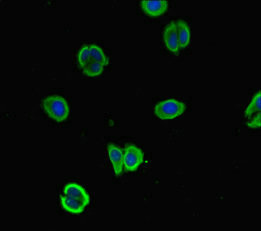Full Product Name
Rabbit anti-Homo sapiens (Human) NALCN Polyclonal antibody
Alternative Names
A530023G15Rik antibody; bA430M15.1 antibody; CanIon antibody; Canlon antibody; FLJ23913 antibody; FLJ44659 antibody; FLJ44764 antibody; Four repeat voltage gated ion channel antibody; MGC74524 antibody; Nalcn antibody; NALCN_HUMAN antibody; Putative 4 repeat voltage gated ion channel antibody; Sodium leak channel non-selective protein antibody; sodium leak channel, non selective antibody; Vgcnl1 antibody; VGCNL1 protein antibody; voltage gated channel like 1 antibody; Voltage gated channel-like protein 1 antibody
Immunogen
Recombinant Human Sodium leak channel non-selective protein (19-141AA)
Immunogen Species
Homo sapiens (Human)
Conjugate
Non-conjugated
The NALCN Antibody (Product code: CSB-PA815590LA01HU) is Non-conjugated. For NALCN Antibody with conjugates, please check the following table.
Available Conjugates
| Conjugate |
Product Code |
Product Name |
Application |
| HRP |
CSB-PA815590LB01HU |
NALCN Antibody, HRP conjugated |
ELISA |
| FITC |
CSB-PA815590LC01HU |
NALCN Antibody, FITC conjugated |
|
| Biotin |
CSB-PA815590LD01HU |
NALCN Antibody, Biotin conjugated |
ELISA |
Purification Method
>95%, Protein G purified
Concentration
It differs from different batches. Please contact us to confirm it.
Buffer
Preservative: 0.03% Proclin 300
Constituents: 50% Glycerol, 0.01M PBS, PH 7.4
Tested Applications
ELISA, IF
Recommended Dilution
| Application |
Recommended Dilution |
| IF |
1:50-1:200 |
Storage
Upon receipt, store at -20°C or -80°C. Avoid repeated freeze.
Lead Time
Basically, we can dispatch the products out in 1-3 working days after receiving your orders. Delivery time maybe differs from different purchasing way or location, please kindly consult your local distributors for specific delivery time.
Usage
For Research Use Only. Not for use in diagnostic or therapeutic procedures.







